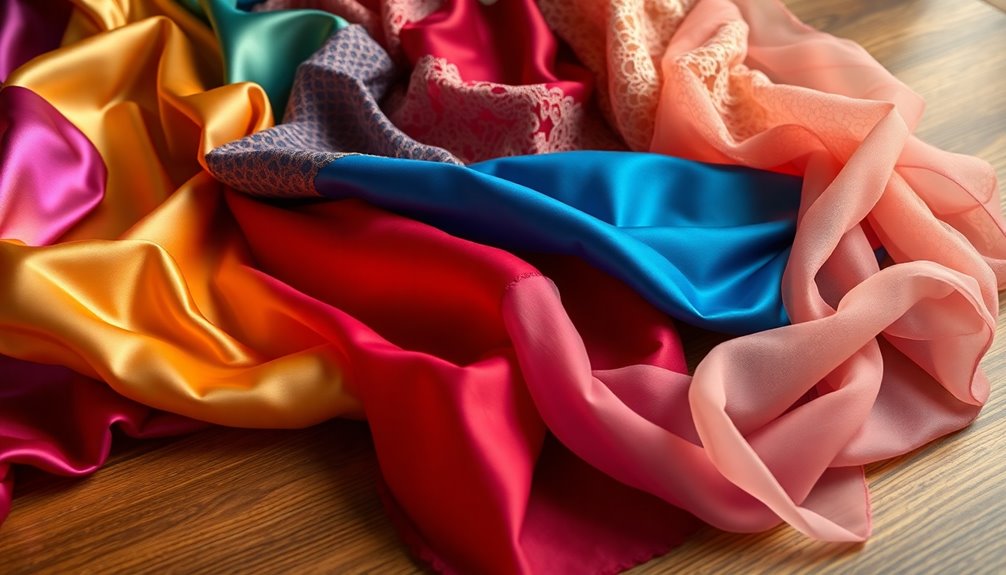When you explore fashion textiles, you're stepping into a domain that shapes your style and identity. Textiles are more than just fabric; they're the backbone of design, blending comfort and durability. Understanding fibers like cotton and polyester can guide you in making informed choices. You'll discover various production techniques, from weaving to knitting, which create unique aesthetics in garments. Fashion textiles also reflect cultural heritage and impact the global economy considerably. As you uncover more about this fascinating world, you'll gain insights that enhance your appreciation for what you wear every day.
Key Takeaways
- Fashion textiles are essential for design, influencing comfort, durability, and the overall aesthetic of garments.
- Understanding fiber types—natural, synthetic, and semi-synthetic—guides informed material choices for various clothing purposes.
- Textile manufacturing involves transforming raw fibers into fabrics through processes like spinning, weaving, and dyeing.
- Different fabric production techniques, such as knitting and crocheting, create unique textures and functionalities in textiles.
- The global textile industry significantly impacts economies and cultures, reflecting social identities and promoting sustainability initiatives.
Understanding Fashion Textiles
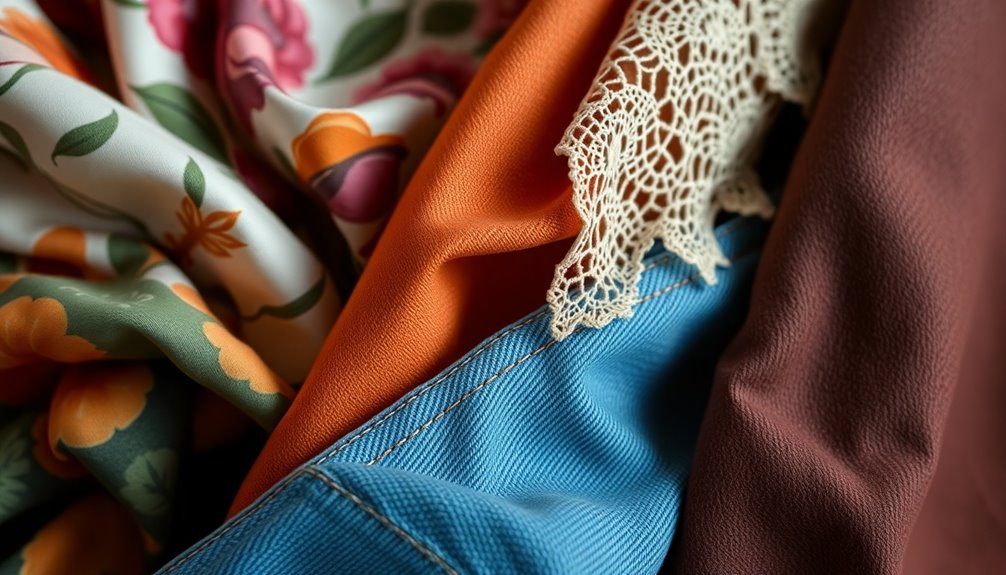
Understanding fashion textiles is essential for anyone interested in the industry. You'll discover that textiles form the foundation of fashion, influencing everything from design to wearability.
By grasping the characteristics of different fibers, you can make informed choices about materials that suit your vision and purpose. Natural fibers like cotton and silk offer comfort and breathability, while synthetic fibers provide durability and resistance to moisture. Semi-synthetic fibers strike a balance between sustainability and performance.
Your selection impacts the quality, drape, and overall aesthetic of garments, which ultimately shapes consumer appeal. Whether you're designing, buying, or selling, understanding these materials will enhance your ability to connect with your audience and stay ahead in an ever-evolving fashion landscape.
Types of Textile Fibers
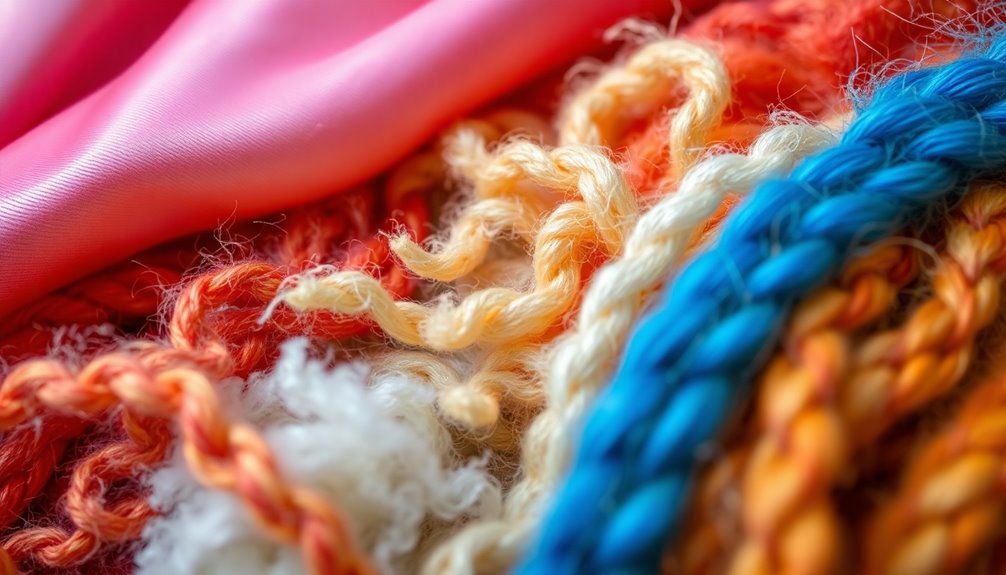
In fashion, the choice of textile fibers plays a significant role in determining the look and feel of a garment.
You'll find three main types: natural, synthetic, and semi-synthetic. Natural fibers, like cotton and silk, offer comfort and breathability, making them ideal for casual wear.
Synthetic fibers, such as polyester and nylon, are durable and moisture-resistant, perfect for active clothing.
Semi-synthetic fibers, including rayon and lyocell, combine the best of both worlds, balancing sustainability with performance.
Each fiber type impacts not only the garment's aesthetic but also its longevity and care requirements.
Textile Manufacturing Overview
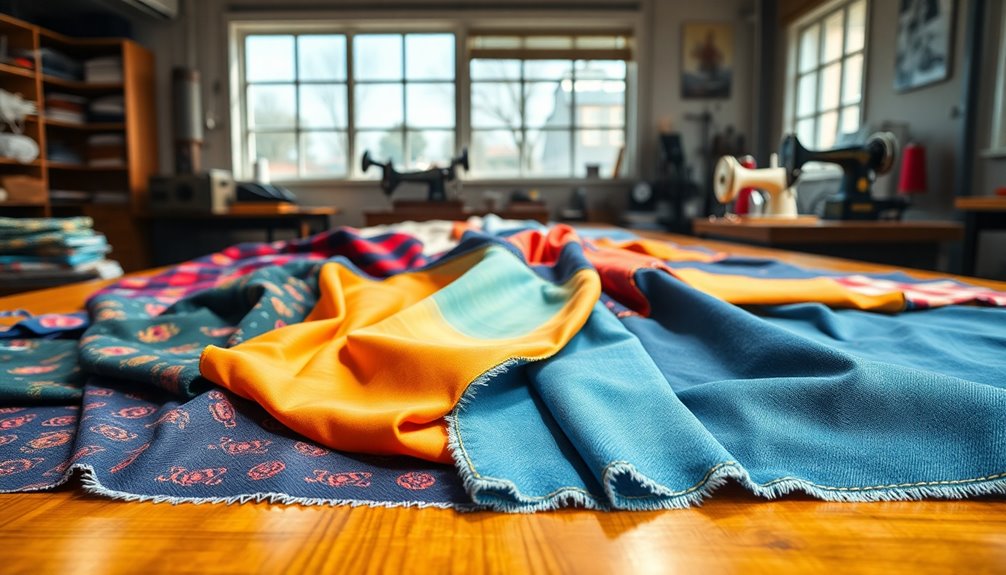
Textile manufacturing involves a series of intricate processes that transform raw materials into the fabrics you wear.
It starts with sourcing and preparing natural or synthetic fibers, which undergo cleaning to remove impurities.
Once prepared, these fibers are spun into continuous yarn strands through carding and twisting.
The next step is fabric production, where the yarn is either woven or knitted, creating the textile base.
Afterward, the fabric undergoes cutting, sorting, and sewing, ensuring it meets quality standards.
Finally, additional processes like dyeing or printing may be applied to enhance aesthetics.
This extensive journey from raw materials to finished fabric plays a vital role in the fashion industry, shaping the garments that define your style.
Fabric Production Techniques
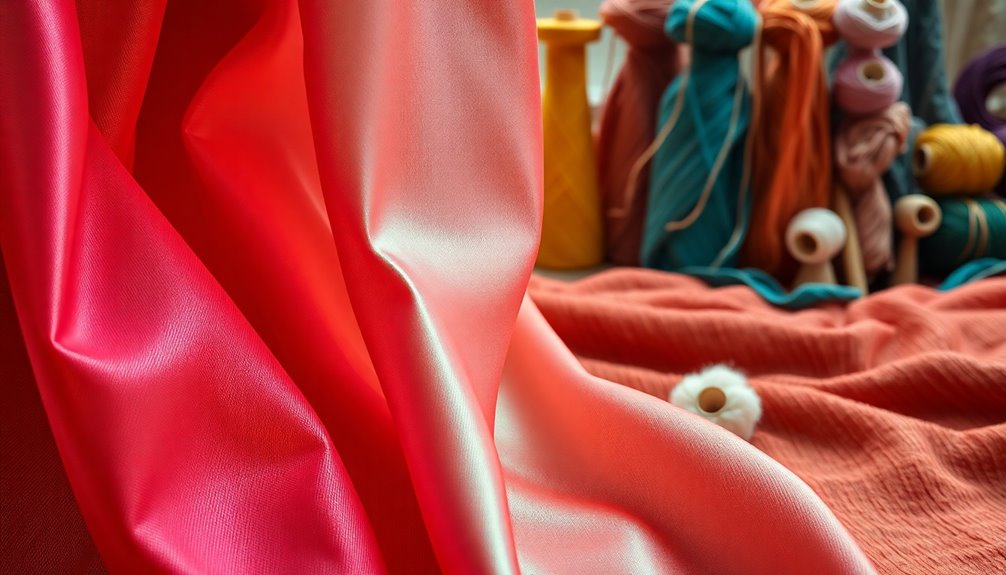
Various fabric production techniques shape the textiles you encounter daily, each offering unique characteristics and applications.
You'll find weaving, where warp and weft threads interlace, creating strong and versatile fabrics.
Knitting, on the other hand, uses loops of yarn, resulting in stretchy, comfortable materials.
Crocheting employs a hook to form intricate designs, perfect for decorative items.
Braiding twists multiple fibers together, commonly used for ropes and accessories.
If you're looking for plush textiles, tufting pulls yarn through backing, ideal for durable rugs.
Finally, felting combines heat and moisture to bond fibers, producing dense fabrics for various uses.
Each technique not only influences the fabric's texture but also its functionality, making your choices in fashion textiles diverse and exciting.
Cultural Significance of Textiles
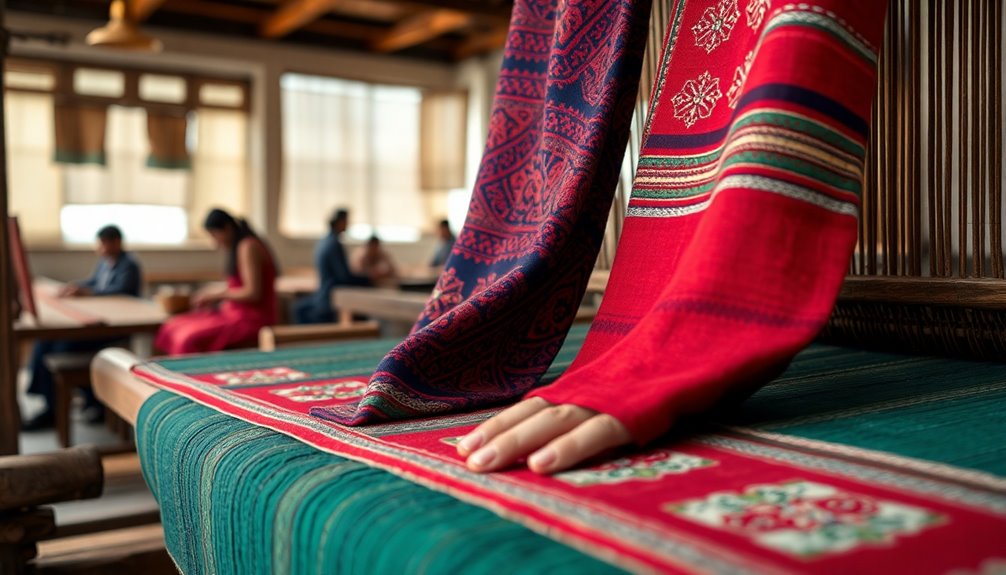
Celebrating the cultural significance of textiles reveals how fabric weaves together social identity and heritage.
You'll find that textiles often tell stories, reflecting traditions, beliefs, and values unique to different communities. For example, the intricate patterns of Indigenous textiles embody ancestral knowledge, while traditional garments can signify social status or milestones.
As you explore various cultures, you'll notice how textiles serve as a canvas for artistic expression, connecting generations through craftsmanship. This link between fabric and identity fosters a sense of belonging and pride.
Economic Impact of Textile Industry
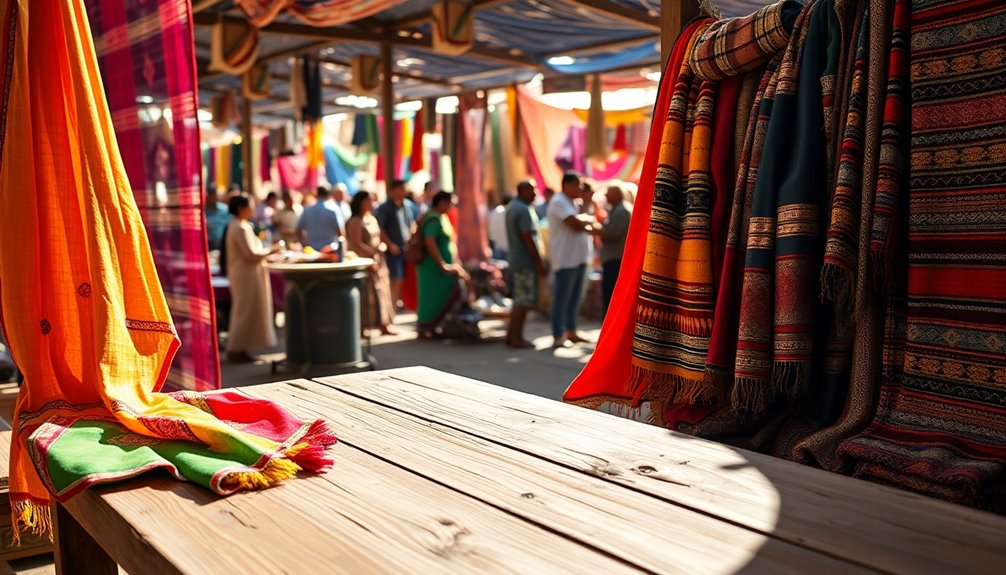
The intricate relationship between textiles and cultural identity also highlights the significant economic impact of the textile industry.
When you consider the global textile market, valued at nearly a trillion dollars, you'll see how it drives economic growth and job creation. This industry supports millions of livelihoods, from farmers cultivating natural fibers to skilled workers in manufacturing and retail.
The demand for diverse textiles fosters international trade and cultural exchange, connecting communities worldwide.
Moreover, as sustainability becomes a priority, the industry adapts, investing in eco-friendly practices and innovative materials.
Innovations in Fashion Textiles
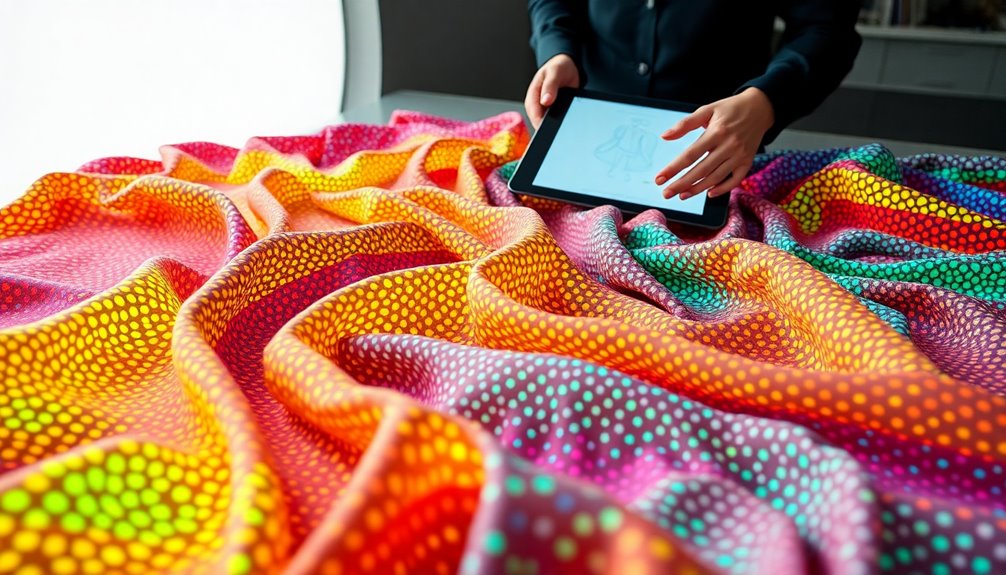
In recent years, innovations in fashion textiles have transformed the industry, blending aesthetics with functionality.
You'll find that designers are increasingly prioritizing sustainable practices while enhancing performance through cutting-edge technology. Here are some key innovations shaping the landscape:
- Smart textiles: Fabrics that can monitor health, change color, or even regulate temperature.
- Eco-friendly materials: Biodegradable fibers and recycled fabrics that reduce environmental impact.
- 3D printing: Revolutionizing production, allowing for customized designs and reducing waste.
These advancements not only elevate the style but also address pressing environmental concerns.
As you explore the world of fashion textiles, you'll discover how these innovations create a balance between high fashion and conscious consumerism.
Embrace the future, where style and sustainability go hand in hand!
Frequently Asked Questions
How Can I Identify Sustainable Fashion Textiles?
To identify sustainable fashion textiles, you should look for natural fibers like organic cotton, hemp, or linen, which are biodegradable and require fewer chemicals.
Check for certifications like GOTS or OEKO-TEX, indicating eco-friendly practices.
Consider semi-synthetic options like Tencel, made from wood pulp and processed sustainably.
Avoid synthetic fibers, as they often contribute to plastic pollution.
Finally, support brands that prioritize ethical production and transparency in their supply chains.
What Are the Environmental Impacts of Fashion Textile Waste?
Isn't it fascinating how your love for fashion can contribute to a mountain of waste?
Fashion textile waste poses severe environmental impacts, from landfill overflow to greenhouse gas emissions.
When you toss those old clothes, they often end up in places where they take years to decompose, leaching toxins into the soil and water.
Embracing sustainable practices can help mitigate these effects, allowing you to enjoy style without harming the planet.
How Does Fabric Care Affect Textile Longevity?
Fabric care greatly impacts textile longevity.
When you wash and dry your garments properly, you help maintain their shape and color. Using the right temperature settings and gentle detergents prevents damage, while air drying minimizes wear from heat.
Regularly checking for stains and treating them promptly can also extend the fabric's life.
What Role Do Fashion Trends Play in Textile Selection?
Fashion trends act like a compass, guiding you through the vast landscape of textile selection.
When you embrace the latest styles, you're not just choosing fabric; you're weaving your identity into the tapestry of culture.
Each trend influences the colors, textures, and patterns you opt for, shaping your wardrobe.
How Can Consumers Support Ethical Textile Production?
You can support ethical textile production by choosing brands that prioritize sustainable practices.
Look for certifications like Fair Trade or GOTS, which guarantee fair wages and environmentally friendly processes.
Additionally, buy second-hand or upcycled clothing to reduce waste.
Engage with local artisans and support small businesses that focus on ethical production.
Conclusion
As you step back from the vibrant tapestry of fashion textiles, think of this journey as a loom weaving stories of culture, economy, and innovation. Each fiber, like a character, plays its part in a grand narrative that shapes our world. Embrace the artistry behind every stitch, for it's not just about what you wear, but the dreams and sustainability woven into each garment. So, venture forth, and let your choices echo in the fabric of tomorrow.
